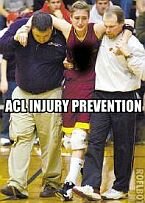Shoes: How to Get a Good Fit
Proper size
Don't select shoes by the size inside the shoe. The size your foot measures is your foot size. Sizes vary among shoe brands and styles. Judge the shoe by how it fits on your foot. Don't hesitate to try on a shoe in a size other than what measuring indicates. Don't assume that you know your current shoe size. Have both feet measured, as you stand, each time you by your shoes (the size of your feet changes as your grow older). Most people have one foot larger than the other. Fit to the largest foot.
Try on shoes at the end of the day (or after a workout for athletic shoes) when your feet are the largest. Allow 3/8" to 5/8" room between the end of the longest toe (in some people it is the 2nd toe) and the end of the shoe (i.e. Toe box). Your foot continues to move forward inside the shoe even when the ground stops the shoe from moving.
Try shoes on with the same thickness of socks you intend to wear. Finally, if you use orthotics try the shoes on with them.
Shape
Unless there is a reasonable match between shoe shape and foot shape, then fit, regardless of proper size, is largely nullified. Select a shoe that conforms as nearly as possible to the shape of your foot. The ball of the foot should fit at the widest part of the shoe. This is where the shoe is designed to flex. Women especially, should check this as they tend to be wider here relative to the heel.
The "last" of the shoe is the model on which the shoe is built. There are three types: straight, semi-curved and curved. Each shoe company works from a specific last - their last may match your fit more closely.
To determine your foot shape, stand on a sheet of paper and trace the outline of each foot. Draw a straight line bisecting your heel (dividing it in half), from your heel to your toes. If the line runs through your first two toes you have a straight foot. If the line runs through your middle toe, you have a semi-curved foot. If the line runs through the last two toes, you have a curved foot.
Don't purchase shoes that feel too tight, expecting them to stretch to fit. Your heel should fit comfortably with a minimum of slippage. Women's heels tend to be narrower than men's.
Type of foot

Know your foot type and gait characteristics. Is your foot properly arched, flat or high arched. The properly arched foot lands on the outside of the heel and rolls inward slightly to absorb shock. This foot needs moderate stability and control.
Arch Type

The flat foot or low arch usually exhibits a great deal of pronation, landing on the outside of the heel and rolling inward excessively. To see if this is your problem, get your feet wet and walk (don't just stand) on a piece of paper. If you see the print of your entire foot including your arches, you are probably a pronator. Over pronators tend to have flexible feet so this foot needs maximum stability and control. Avoid highly cushioned, highly flexible shoes.
The high arched foot underpronates and does not absorb shock well. This type of foot may supinate or roll outward when running. To see if this is your problem, get your feet wet and walk (don't just stand) on a piece of paper. If you only see the print of your heel and the ball of your foot, your you are probably a supinator. Supinators feet are more rigid and cannot absorb shock well so, this foot needs a highly cushioned sole with maximum shock absorption plus a great deal of flexibility to facilitate proper foot motion. Stay away from heavy motion control shoes that can make gait unstable and may even promote ankle injury.
General Rules
Walk in the shoes to make sure it fits and feels right. They should be comfortable when your first try them on. Wear new shoes no more than one hour the first day, increasing the time worn each day by one hour. This will reduce the impact of new stresses, which may occur as a result of wearing the new shoes. Check for any redness or rubbing which new shoes may cause. Store shoes in cedar wood shoetrees when shoes are not worn to maintain shoe fit and shape.
Wear Patterns
Observe your shoes for uneven wear patterns, which may indicate improper gait or other biomechanical problems. Is the wear pattern even between shoes? Major causes of asymmetrical wear are limb-length discrepancies and excessive pronation. The wrong shoe type can cause abnormal wear patterns. Look at different types of shoes you wear. If the abnormal wear pattern is consistent, then it is usually a biomechanical flaw. If only one style of shoes has abnormal wear, then look at the shoe with the abnormal wear for differences from all the other shoes. For running shoes, does the wear match the mileage? If the mileage appears to be low and the wear great, look for problems in the shoe.
If the upper looks like it is hanging over the outside of the shoe, it may indicate that the last (shape) of the shoe is too curved for the shape of the foot. If the upper looks like it is hanging over the inside of the shoe, it may be that the foot pronates too much or the foot may be too curved for the shoe. Abnormal wear through at the toe box means the shoe is sized too small. If the heel counter is tipped to the inside it usually means pronation. If there is excessive wear on the inside of the heel counter, it is frequently due to excessive heel motion within the counter indicating that the counter is too big for the heel.
See Footwear: Shoe wear patterns offer clues to injury and prevention.
Shoe Design
Heel:
The heel takes a large proportion of a person's weight. Unfortunately, the height of the heel is often determined by fashion, not by the needs of our feet. Ideally, the heel should have a broad base and the height should be no greater than 4cm. A wedge, which adds height to the heel, enhances the shoe's ability to absorb shock and reduces strains. While this may ease problems like achilles tendonitis, a shoe with a higher heel my feel less stable.
Heel Counter:
This is the portion of the shoe that grasps the heel at the sides and back, preventing the heel from sliding up and down while walking. It must be rigid and durable as it stabilizes and helps maintain the position of the heel when the shoe contacts the ground. As the heel counter softens or breaks down and loses its shape, the shoe becomes less supportive. Not all shoes have a heel counter.
Upper:
This is the material that forms the main part of the shoe covering the top of the foot. Dress shoes usually have leather uppers. Athletic shoes with synthetic fabric uppers are lighter, washable and breathable. Athletic shoes should have a padded tongue to cushion against lace pressure and padded heel counter to cushion the ankle and help prevent achilles tendonitis.
Outsole:
This is the treaded layer glued to bottom of the midsole. It resists wear, provides traction and absorbs shock. The outsole is usually leather in dress shoes and some type of rubber in athletic shoes. In running shoes, stud or waffle outsole are good for running on dirt or grass because they improve traction and stability. Ripple soles are better for running on asphalt or cement surfaces.
Midsole:
The midsole is located between the tread and the upper. It is the most important part of any running shoe. It controls excessive foot motion and provides cushioning and shock absorption. The primary material used in midsoles are EVA (ethylene vinyl acetate) and PU (polyurethane). EVA is a foam that is light and has good cushioning, but breaks down fairly quickly. Compression-molded EVA is harder but more durable. PU, also a foam, is denser, heavier, and more durable than EVA. Most shoes are also cushioned with gel, foam or various manufacturer-specific technologies that are encapsulated in the midsole. This cushioning last longer than previous methods and often adds stability as well as shock absorption.
Lining:
This is the inside of the shoe and should be smooth and without seams. Most shoes have an insert with an arch support that can be pulled out of the shoe. It is usually best to replace this with a better pre-fabricated insert.
Fastenings: This holds the foot in the shoe. The shoe should have laces, straps with buckles or Velcro to keep them in place. The lacing area and tongue should be padded in athletic shoes, especially if you have bony bumps on your insteps. Slips on shoes are kept in place either because they are too small for the foot or by curling the toes, neither of which is proper.
Flexibility:
An average pair of feet flexes at the ball about 7000 times/day. Whatever the degree of "flex resistance" by the shoe is the degree to which a work overload is imposed on the foot at the expense of comfort. Shoe flexibility involves the outsole, insole, upper and general construction of the shoe.
Weight:
The heavier the shoe, the more "foot-lift" workload on the foot, with consequent lessening of comfort. A difference of only four ounces in the weight of a pair of shoes can make a difference of over one ton of foot-lift daily. Foot-lift load affects fatigue and strain.
Inside-Shoe Climate:
This is among the most important shoe comfort factors and one most often overlooked. It means materials used, temperature, humidity, moisture, breathability, and insulation.
Underfoot resilience (shock absorption): The feet bear a cumulative total of about 800 tons of impactive body weight daily in a series of about 7000 "step-shocks." Under natural conditions (resilient soil) the foot is equipped to absorb such impact, but under unnatural conditions of non-resilient ground surfaces common to today, it is not. Hence a measure of underfoot cushioning built into the shoe is essential to shoe comfort.
How to Determine When Your Shoes Are Worn Out:
- Inspect the shoes to see if any glued or stitched areas are pulling away from the seams. If this occurs it is time for a change.
- Place the shoe on a hard, flat surface and look at it from the rear. The entire upper part of the shoe should be centered and not leaning to the side or bowed to the side (inside or outside).
- When looking from the rear of the shoe, the sole should rest level to the surface. If the shoe rocks side to side, replace it.
- Push on the heel counter to see if it is still rigid. If not, the shoe will not support your foot.
See my article on Orthotics to decide whether you need an orthotic.
See Slam Dunk Science Shoe 101 for more information on proper shoe fit.
|
The Ultimate Nutritional Lie Detector Test LEARN MORE 
|
Kettlebell Rehab

Click Here
To See How Kettlebells will transform your body!
Vortex Rehab

Click Here
To See How This
Revolutionary Machine
Can Help You!
Partner / Support

Loans up to 3 months - fast cash advances for up to 90 days and up to $5,000!


















